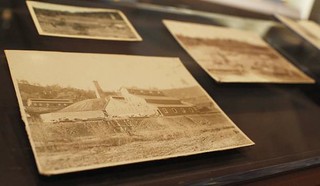
PREV ARTICLE
NEXT ARTICLE
FULL ISSUE
PREV FULL ISSUE
MORE ON AMERICA'S FIRST GOLD RUSH EXHIBIT
Last week we discussed of Dahlonega Mint gold coins at the University of Georgia. Here's a new article with more information and images.
-Editor
Despite the historical distinction, a Wright State environmental history professor called the era an ugly chapter of Georgia’s past. Like the better-known gold rushes in California and Alaska, the Georgia gold rush has been romanticized, shaped by the myth of Appalachian “exceptionalism,” said Drew Swanson, who holds a University of Georgia doctorate. But it wreaked enormous environmental damage in the north Georgia mountains many people think of as pristine, explained Swanson in a recent talk.
The centerpiece of the exhibit is a collection of 62 gold coins — an example of every gold coin produced from 1829 to 1861 by a federal mint operating in Dahlonega. The mint only produced gold coins in denominations from $1 to $5. The Thomas Leverette McMullan Reed Creek Collection of Dahlonega Mint Coins is one of only a few complete collections, although a handful of people in Athens and Oconee County also own sets. John and Marilyn McMullan recently donated the collection, valued at about $715,000, according to one estimate. In addition to the coins, the exhibit features gold nuggets, postcards, historic maps, and even a couple of old movies. The Civil War put a temporary halt to most Georgia gold mining, but it resumed afterward, bigger and even more environmentally destructive, he said. Gold production peaked circa 1900, then faded in the wake of new discoveries in Alaska, Australia and other places, he said. One more speaker is scheduled in connection with the exhibit, which runs through Dec. 5 in the Russell Building. UGA history professor Stephen Mihm is scheduled to speak Sept. 21 on “A Nation of Counterfeiters: Capitalists, Con Men and the Making of the United States.”
To read the complete article, see:
To read the earlier E=Sylum article, see:
THE BOOK BAZARREWayne Homren, Editor The Numismatic Bibliomania Society is a non-profit organization promoting numismatic literature. See our web site at coinbooks.org. To submit items for publication in The E-Sylum, write to the Editor at this address: whomren@gmail.com To subscribe go to: https://my.binhost.com/lists/listinfo/esylum All Rights Reserved. NBS Home Page Contact the NBS webmaster 
|

